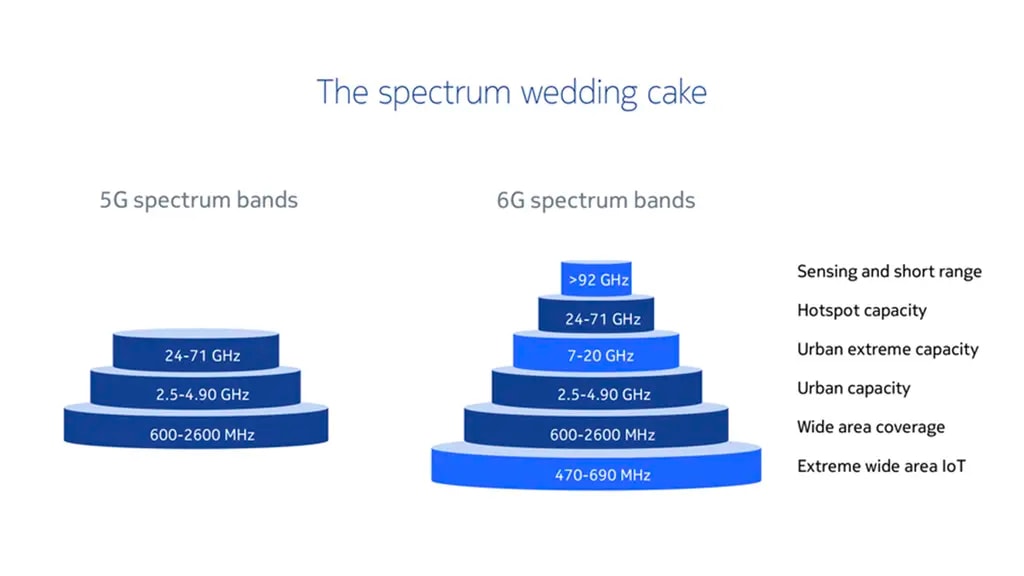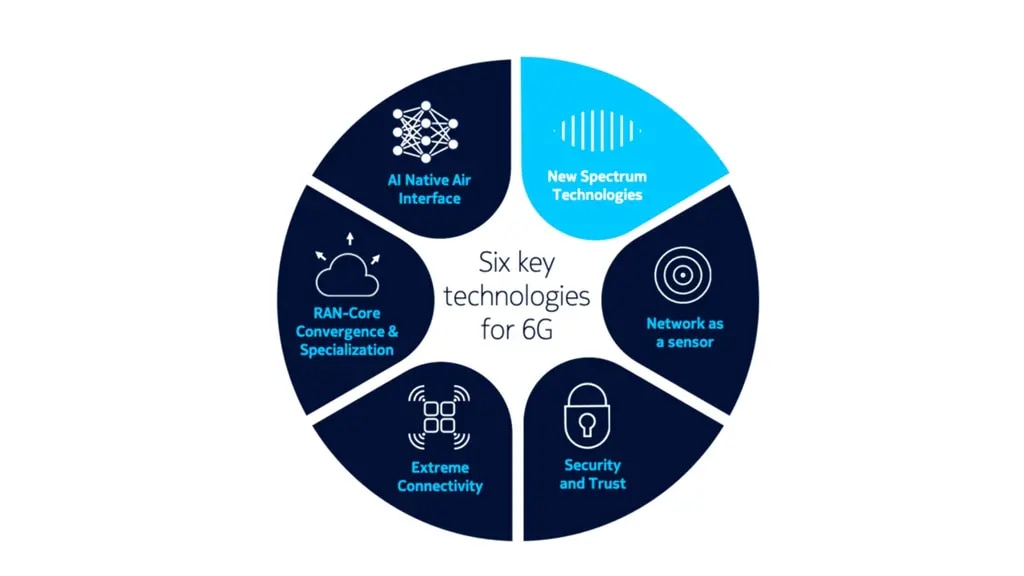The 6G era’s enormous capacity demands will require new spectrum and extreme massive MIMO

Ever since the advent of language, communication has played a crucial role in the evolution of human society. Each major communications invention – writing, the printing press, the computer, digital media, the internet, social networks – has resulted in an exponential increase in the amount of information that humans generate, store and share. Today, the amount of knowledge in the world is doubling every 12 hours, and the real-time data from which new knowledge is extracted is growing even faster. All that data and knowledge is being transmitted through communication networks.
As a consequence, demands on our networks have grown astronomically, and nowhere have those pressures more apparent than on mobile networks. Traffic on mobile networks has increased by several orders of magnitude since inception of mobile data in 3G, and demand will only continue increasing in the future. To offer some perspective, a 35% year-over-year increase in demand would necessitate a 2000% increase in capacity over 10 years. Hence 6G must be designed to provide, at minimum, 20 times more wide-area capacity than 5G.
With advances in signal processing, radio technologies and computing, 6G will rise to meet this challenge through a combination of new spectrum, higher spectral efficiency and more spectrum reuse. In a new Nokia Bell Labs white paper, we map out in detail how these forthcoming innovations and emerging trends will carry us to the 20X capacity gains needed in the 6G era, but let’s briefly explore two of the most critical elements of that extreme mobile broadband equation.
Exploiting the airwaves for 6G
Every generation of mobility has increased capacity by expanding carrier bandwidth – in essence creating a broader swathe of airwaves over which to transmit information. The move from 3G to 4G grew carrier size from 5 MHz to 20 MHz, while the transition from 4G to 5G saw carrier bandwidth grow from 20 MHz to 100 MHz. When 6G emerges, we expect spectral bandwidths to increase once again, reaching 400 MHz, greatly increasing the baseline capacity of a single cell.

To achieve these large carrier sizes, we’ll need to carve out large blocks of frequencies from previously untapped spectrum. As 5G has taken root, governments around the world have recognized the importance of advanced mobile networks for powering national economic growth, which has given them plenty of incentive to clear new spectrum for mobile use. Ten years from now we expect new spectrum bands between 7 GHz and 20 GHz to open up for 6G use, which will provide the necessary bandwidth to create these new high-capacity carriers.
This so-called mid-band 6G spectrum will become the workhorse frequencies of mobile networks. Lower bands do not have sufficiently large bandwidth allocations to create the 400-MHz carriers needed for 6G. Meanwhile the harsh signal propagation conditions in the ultra-high frequency bands make it expensive to use them for wide area coverage. Mid-band spectrum is the sweet spot for simultaneously providing extreme capacity and competitive coverage.
But these airwaves won’t be the only source of new spectrum for 6G networks. We expect governments to continue identifying new bands for mobile use, fueling the mobile broadband revolution further. In addition, it is likely we will see spectrum allocated for other types of use cases in the 6G era. For instance, regulators are looking at the 470-694 MHz band as a means for providing broad coverage in rural and remote regions. The low frequencies in this band mean signals propagate much further, extending the network’s reach. We may also see sub-THz bands beyond 90 GHz come into use, which could supply extremely high peak data rates for the most bandwidth-intensive applications as well as connect highly dense sensing networks.
Reusing airwaves to the utmost degree with extreme massive MIMO
New spectrum alone, however, isn’t enough. By expanding carrier bandwidth from 100 MHz to 400 MHz gives us a 4X increase in capacity at most, well short of the 20X demand of the 6G era. We will need to utilize and re-use that spectrum in new ways.
The last several generations of mobility have seen spectral efficiency of wide area cells improve substantially mainly through the application of more sophisticated multiple-input multiple output (MIMO) techniques. In short, we’ve added more antenna elements to each successive generation: 4G uses 2x2MIMO and 4x4MIMO while 5G benefits from massive MIMO using around 200 antenna elements and up to 64 transceivers. 6G may support on the order of 1024 antenna elements in the new mid-bands.
By moving into higher frequency bands we can support denser antenna arrays. As the 6G mid-bands are double the frequency of today’s 3.5 GHz 5G bands, we can pack four times as many antennas onto an antenna array of comparable dimensions. These large antenna arrays will help achieve a significant increase in capacity by sending many more streams of data simultaneously.
Major steps in technology evolution are required to make these high-performance arrays possible. We will need new scalable, low-power radio-frequency and digital front ends, more sophisticated beamforming algorithms, and high-capacity fronthaul and baseband processing.
Scaling capacity by multiple factors

The math is simple. A 4X increase in spectrum multiplied by, say, a 5X increase in spectral efficiency will give us about 20X more capacity. While that equation may be simple, the innovation needed to achieve those numbers is not. Nokia Bell Labs is researching the underlying technologies to make those milestones possible in the 6G timeframe, starting with 5G-Advanced networks and culminating with the advanced signal processing, computing, optical networking and beamforming techniques that will give us this big leap in capacity.
Capacity isn’t the only characteristic that will define 6G networks of the future. In the Nokia Bell Labs white paper “Communications in the 6G era,” we outline six key technologies that will transform networks as in the future, ranging from network sensing to security and trust to AI/ML air interfaces. But a blanket of extreme capacity will be crucial as future applications will hunger for more bandwidth. 3D extended reality and dynamic 3D digital twinning, immersive digital world experiences and fiber-like fixed wireless access are among the more bandwidth-intensive applications that we can anticipate. And then there are the applications we aren’t anticipating. Every generation of cellular communications has produced a big jump in capacity, and that hole has been invariably filled. 6G will be no exception.
The full white paper, “Extreme massive MIMO for macro cell capacity boost in 5G-Advanced and 6G,” can be downloaded here.

